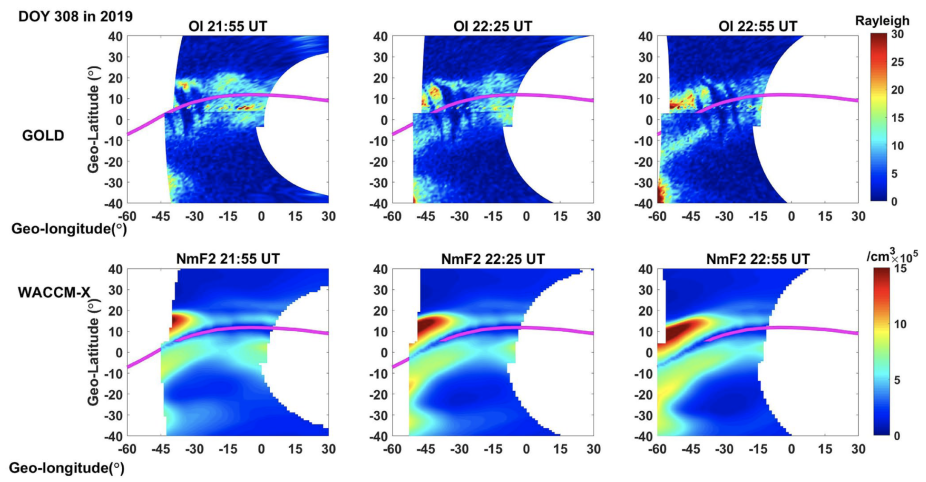JGR Space Physics—Xuguang Cai, Liying Qian, Wenbin Wang, Joseph M. McInerney, Han-Li Liu, and Richard W. Eastes
The Global-scale observation of limb and disk mission observed an extra electron density (Ne) peak after sunset at approximately 30°S near 40°W on 4 November 2019, which is poleward and immediately next to the southern equatorial ionization anomaly (EIA) crest. This Ne peak is different from previously reported mid-latitude peaks that occur at all local times. The Whole Atmosphere Community Climate Model-eXtended captures this phenomenon. Model diagnostic analysis reveals that the decrease of Ne and hmF2 between 15° and 25°S makes Ne near 30°S appear as an extra density peak relative to the southern EIA crest. Transport by poleward meridional wind decreases Ne between 15° and 25°S. Moreover, the upward E × B drifts due to pre-reversal enhancement lift the plasma between the dip equator and 15°S but do not affect Ne much between 15° and 25°S with a low drift speed. Comparison with days without the extra peak shows the importance of E × B drift latitudinal variations on the extra peak formation. This study provides new insights into the dynamic variability of the nighttime ionosphere.

Latitude-longitude distribution of OI 135.6 nm radiance observed by GOLD (top) and NmF2 simulated by WACCM-X (bottom) from 21:55 UT to 22:55 UT on DOY 308 in 2019.